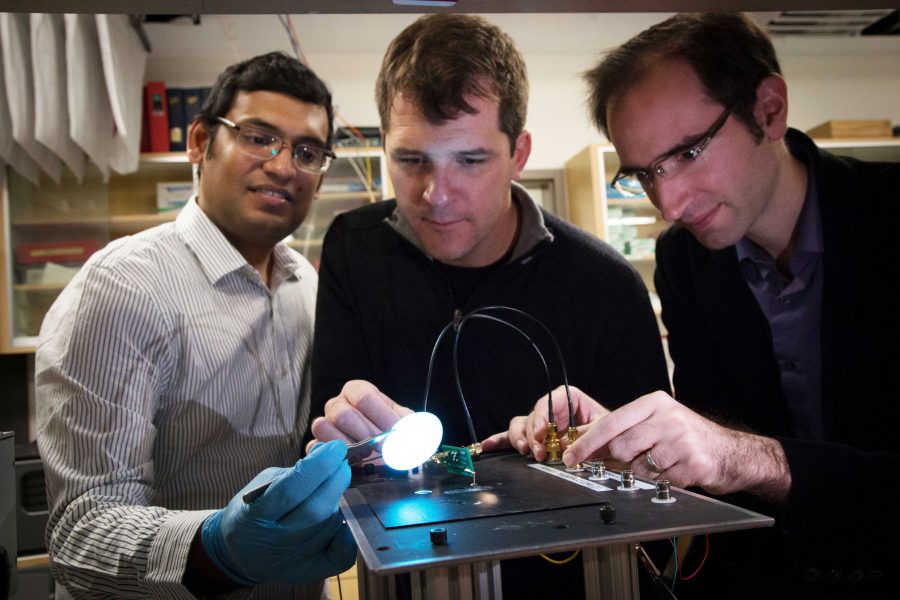Electricity is energy. When it is turned into heat, however, energy is lost.
We do not see or realize it, but inside of power systems, electronic plates convert electricity into energy, heat and other forms of power. So much energy is lost in the form of heat that not a lot of power is generated from renewable energy sources in the U.S. Have you ever thought about converting and creating more efficient power systems to lessen the loss of energy?
University of Utah electrical and computer engineering assistant professors Sriram Krishnamoorthy and Berardi Sensale-Rodriguez, and Washington State University materials science and engineering professor Kelvin Lynn, are considering answers to this question. They received a $1.88 million grant from the Air Force Office of Scientific Research to study more efficient power systems. They will use that money to study semiconductor material — a product that can be used in high-voltage power systems.
High voltage power systems can also improve surveillance drones, which would increase operating time and improve airplane, bus and car performance.
The researchers are specifically looking at whether gallium oxide will perform better as a conductor for high voltage systems.
“They feel that if they can use this material as power conductors for high voltage systems for like electric trains … things can run longer,” said Vincent Horiuchi, a spokesperson for the College of Engineering. “Much heat is lost when using devices and that is why these guys are trying to use efficient power. This can prove to be a really efficient material.”
Scientists on the project feel this study will help determine the material to best reduce energy waste when used as a conductor in high voltage energy systems.
“The goal and mission is to see if there are no errors with this application. This enhanced critical field will allow us to use a ‘thin’ material to sustain a given voltage,” Krishnamoorthy said. “The thinner the material, the lower the resistance and the resultant power loss.”


